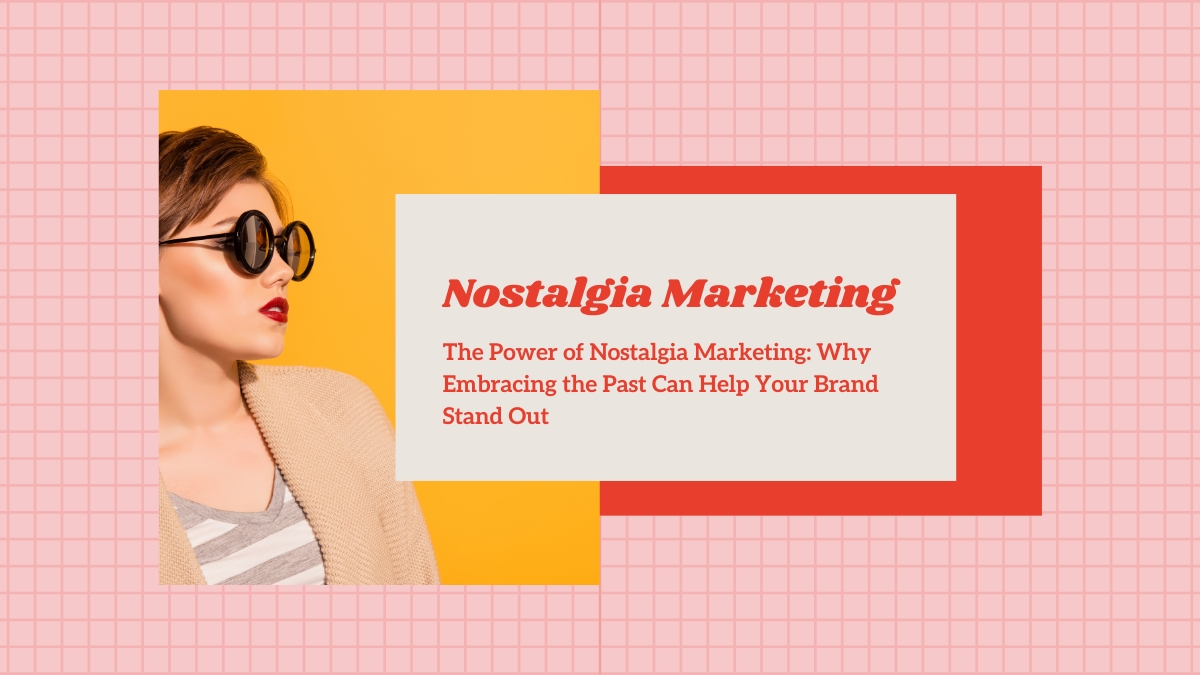
In today’s world, businesses are constantly trying to find new ways to grab the attention of their target audience. While there are many marketing techniques available, nostalgia marketing is one that has proven to be timeless. Nostalgia marketing is all about tapping into consumers’ emotions and memories of the past to create a sense of familiarity and connection with your brand. In this blog post, we will explore the power of nostalgia marketing and why it is still effective in modern advertising.
What is nostalgia marketing?
Nostalgia marketing is a technique that uses memories and experiences of the past to create an emotional connection with your target audience. It can be achieved through various means, including using images or slogans that are reminiscent of a bygone era, creating throwback products, or even resurrecting an old brand identity. The key elements of nostalgia marketing include evoking a sense of familiarity, creating a positive emotional response, and building a strong brand identity.
There have been numerous successful nostalgia marketing campaigns, including Coca-Cola’s “Share a Coke” campaign, which replaced the brand name on bottles with popular names and phrases, and Nintendo’s NES Classic Edition, which reintroduced a classic gaming console with modern technology. These campaigns demonstrate how nostalgia can be used to create a connection with consumers and increase brand loyalty.
Why does nostalgia marketing work?
Nostalgia is a powerful emotion that can create positive associations with your brand. It is a feeling of warmth and happiness that comes from remembering positive experiences from the past. By tapping into these positive emotions, you can create a connection with your audience that will last beyond the advertising campaign.
The psychology behind nostalgia is based on the idea that people tend to view the past through rose-tinted glasses, remembering only the positive experiences and forgetting the negative ones. By evoking memories of the past, you can create a sense of comfort and familiarity that can influence purchasing decisions and brand loyalty.
Tips for using nostalgia marketing in your advertising
To effectively use nostalgia marketing in your advertising, it is essential to understand your target audience and what memories and experiences are meaningful to them. This requires research into your audience’s demographics, interests, and cultural references.
Once you have a clear understanding of your target audience, you can find creative ways to incorporate nostalgia into your brand messaging and visuals. This could include using vintage designs, classic slogans, or even resurrecting a discontinued product.
It is important to strike a balance between the past and the present to create a modern and relevant campaign. This can be achieved by updating old designs or products with modern technology or creating new products that evoke a sense of nostalgia.
Potential drawbacks and ethical considerations
While nostalgia marketing can be effective, there are potential drawbacks and ethical considerations to keep in mind. One risk is relying too heavily on nostalgia and alienating younger audiences who may not have the same emotional attachment to the past. It is important to ensure that your campaign resonates with a diverse range of audiences.
Authenticity is also crucial when using nostalgia marketing. Avoid cultural appropriation or insensitivity by thoroughly researching the history and cultural significance of the elements you use in your campaign.
Conclusion
Nostalgia marketing is a powerful tool for creating a connection with your audience and standing out in a crowded marketplace. By understanding the psychology behind nostalgia and finding creative ways to incorporate it into your advertising, you can create a memorable and effective campaign that resonates with your target audience. However, it is important to stay true to your brand values and be mindful of potential drawbacks and ethical considerations. With careful planning and execution, nostalgia marketing can be a valuable asset to your advertising strategy.




